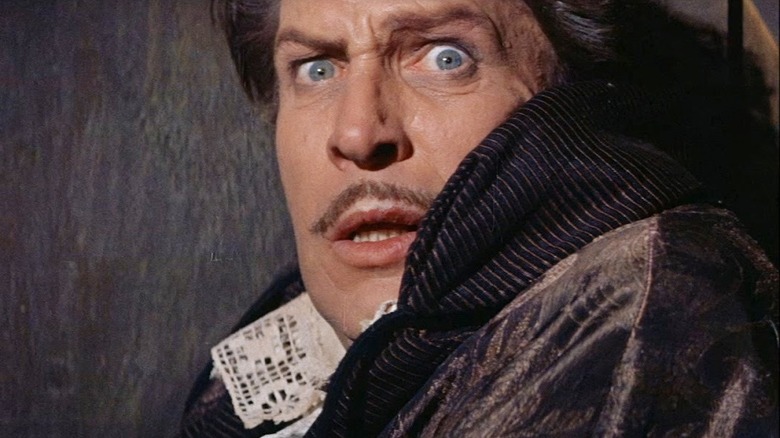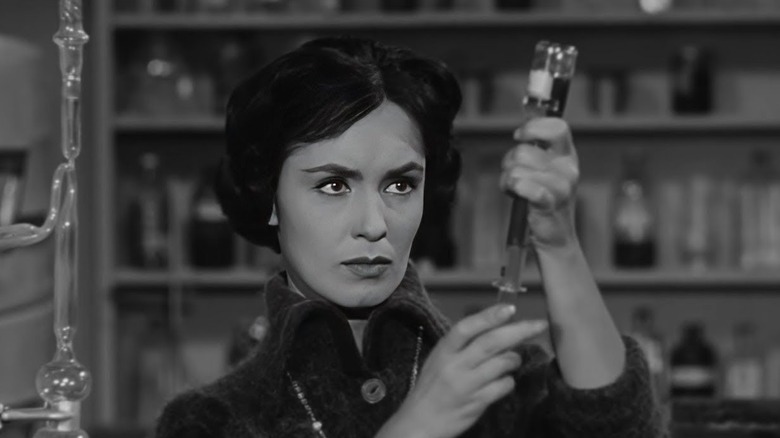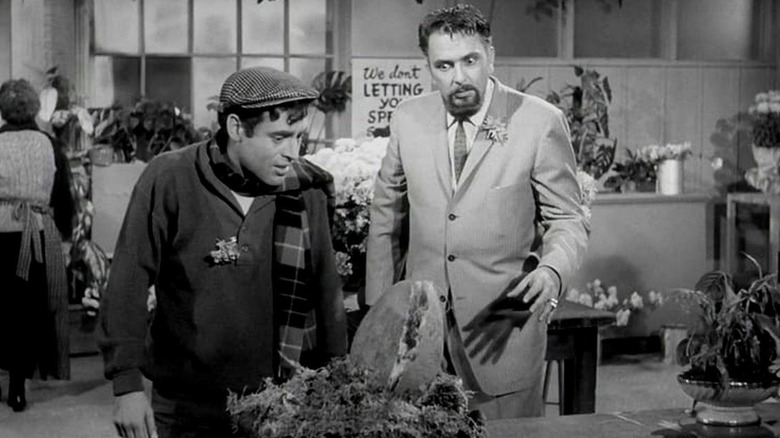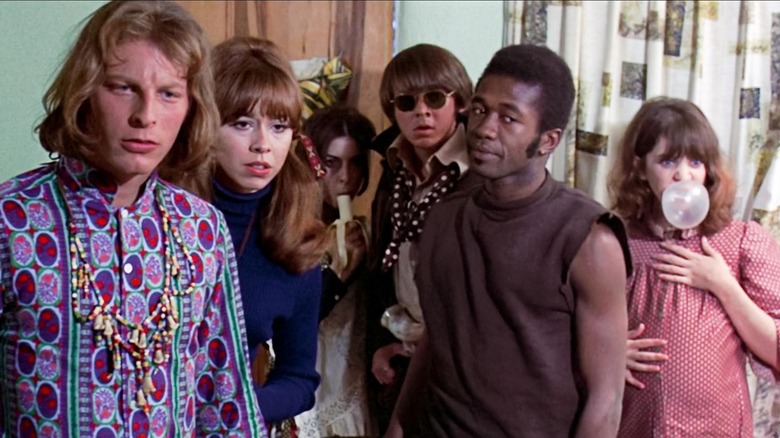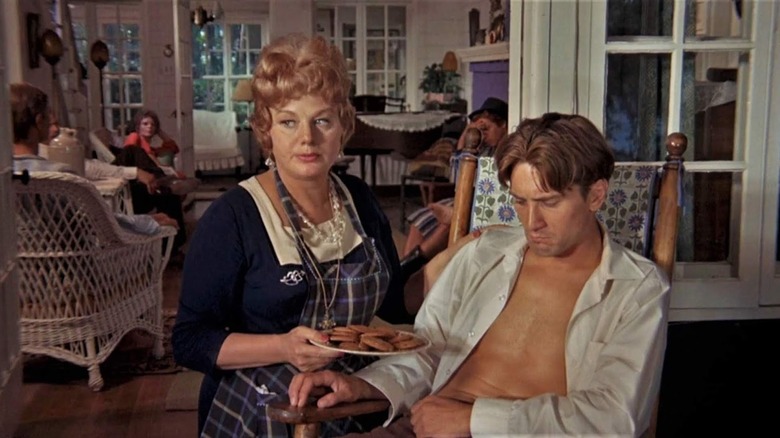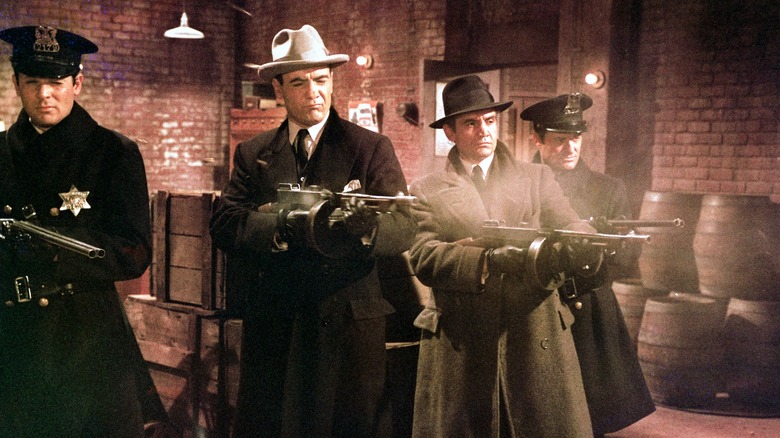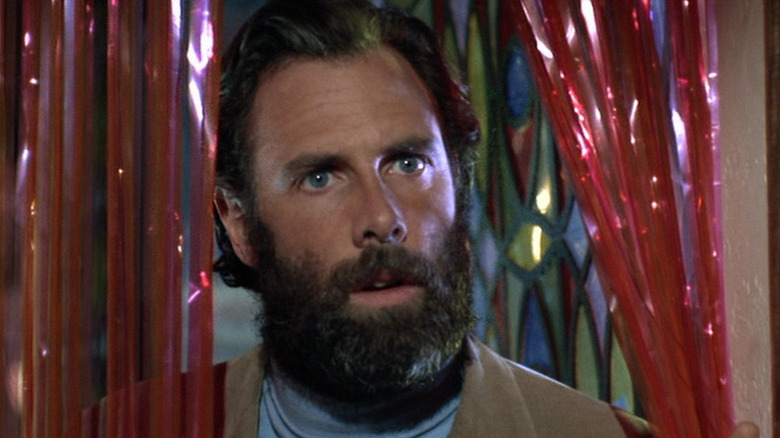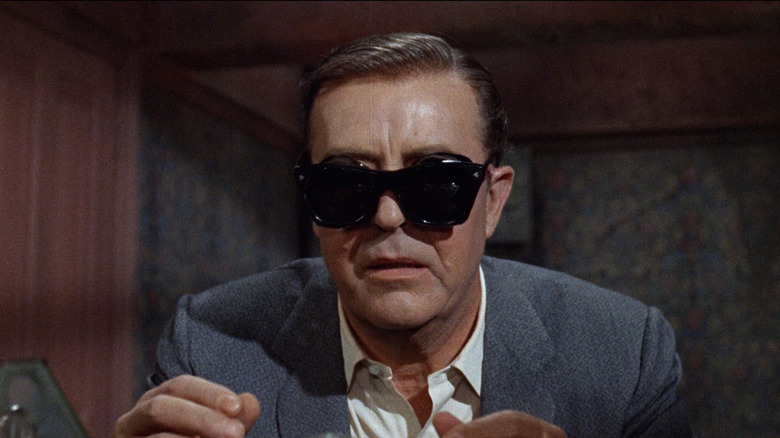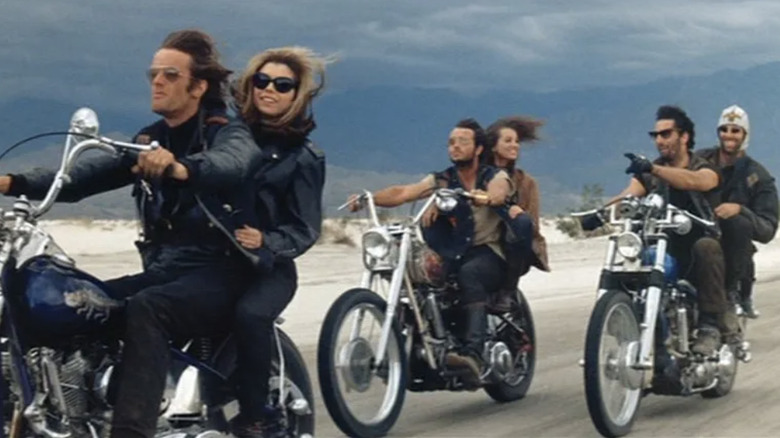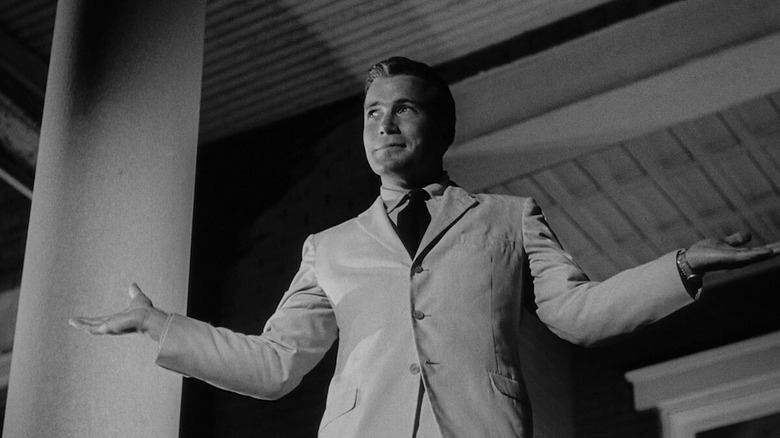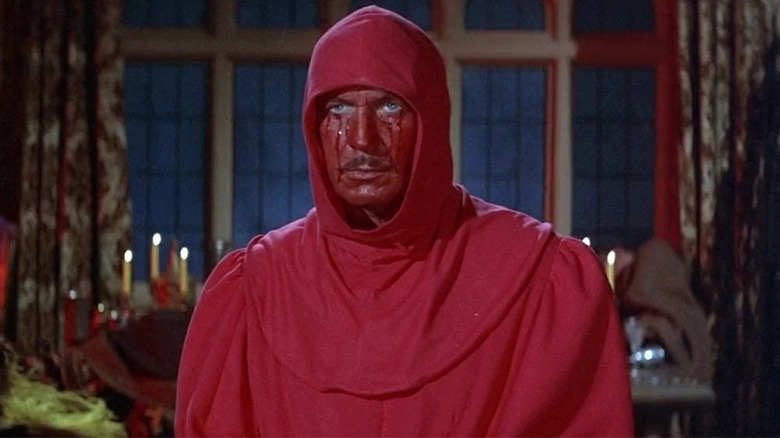The 10 Best Roger Corman Films, Ranked
The world recently said farewell to Roger Corman, the legendary B-movie producer, writer, director, and performer who passed away at the well-lived age of 98. Corman completely revolutionized the film industry, not only with his independent spirit and penchant for low-budget fare, but also serving as a launchpad for some of cinema's greatest creatives, including Robert De Niro, Martin Scorsese, Jonathan Demme, Francis Ford Coppola, James Cameron, Jack Nicholson, and Penelope Spheeris, and that's just scratching the surface.
Known by many for his hundreds of produced films, Corman was also a well-decorated director in his own right, helming 55 films before his death. Corman dabbled in any and all genres, with comedy, drama, horror, exploitation, monster, sci-fi, sexploitation, gothic, and action all well-represented throughout his filmography. In honor of the King of B-movies and one of the most prolific filmmakers of all time, here are his 10 best films as a director, ranked.
10. The Wasp Woman
A year after the success of "The Fly," Corman knew to strike while the iron was hot and delivered "The Wasp Woman." Susan Cabot, of "Gunsmoke" fame, stars as the owner of a failing cosmetics company, who decides to experiment with a youth formula on herself that uses royal jelly extracted from wasps. Instead of finding the fountain of youth, the woman transforms into a homicidal wasp monster. Granted, the poster of the film paints a very different picture of the titular Wasp Woman, whose transformation barely extends beyond "weird sunglasses with bug eyes," but that's half the fun of watching a Corman movie.
The cheap, cheeky prosthetics are part of the film's charm, and the B-movie (or should I say Bee-Movie) logic is genuinely enjoyable, as long as you realize that you're not tuning into a Corman movie for scientific accuracy. In the same way that "The Fly" was about the dangers of hubris and playing God, "The Wasp Woman" is a pretty solid cautionary tale about the dangers of the beauty industry with commentary that would feel right at home alongside "The Twilight Zone" classic, "Eye of the Beholder."
9. The Little Shop of Horrors
While the movie musical version from Alan Menken, Howard Ashman, and Frank Oz is undoubtedly the definitive version of the tale, if it wasn't for Roger Corman's 1960 original B-movie, we wouldn't have "The Little Shop of Horrors." The story is pretty much the same in this black-and-white schlockfest, starring a hapless floral shop worker named Seymour struggling to tell his co-worker Audrey about his feelings for her. Seymour grows a mysterious plant from some "strange seeds" that not only talks but requires human flesh and blood to survive. The plant's popularity brings Seymour success for the first time in his miserable life ... but at what cost?!
The film also marks one of the earliest appearances by Jack Nicholson, who now often dons the cover of re-releases on physical media despite having a small role as a masochistic dental patient. Despite the killer premise, "The Little Shop of Horrors" is more of a farcical black comedy than a horror film, a campy tone that was carried over into the subsequent stage and stage-to-screen adaptations. At an hour and 12 minutes, this barely constitutes a feature film, but there's still something incredibly sweet and whimsical about the timeless tale of a boy and his carnivorous plant.
8. Gas-s-s-s
Corman's final film for American International Pictures is also one of his weirdest, "Gas-s-s-s" also known as "Gas! – Or – It Became Necessary to Destroy the World in Order to Save It." A mysterious gas is unleashed that kills everyone on the planet over the age of 25, so now a bunch of weirdo teens and young adults must rebuild society. Unfortunately, everyone didn't die ... they just got a hell of a lot younger. It plays out like an absurdist hippie satire straight out of National Lampoon but mixed in with an early draft of "Mad Max" without any of the action. And let's not forget the outfits that look like a community theater production of "Godspell."
Corman has said that AIP butchered this film in the edit, so if anyone wants to join me in starting a #ReleaseTheCormanCut campaign for this movie, I'll gladly welcome you to the army, because my life will be incomplete unless I see the film he was trying to make with these ridiculous, problematic pieces.
7. Bloody Mama
If you've ever wanted to see Shelley Winters smoke a cigar and mow people down with a Tommy gun while organizing crime to be carried out by her large adult sons, including Bruce Dern and Robert De Niro, then do I have a movie for you! Loosely based on the real-life Kate "Ma" Barker, Corman's "Bloody Mama" is a glorious bit of Depression-era crime hagsploitation that deserves far more attention than it got. Full disclosure, the actual filmmaking techniques on display for this film are a mess, but that only helps the chaotic nonsense of this gonzo madness. Shelley Winters delivers a performance that must be seen to be believed, and to have done so only five years after winning the Best Actress Academy Award for "A Patch of Blue" is even more impressive.
Plenty have talked about how often Corman's films launched superstars, but he never got enough credit for letting Hollywood legends go buck wild. Everything about "Bloody Mama" is an exercise in bad taste, a demented satire with illegally taboo sexuality and murderous desires, and yet it runs off the pulse of a loving heart like only a Mama can. Corman produced hundreds of these violent sleaze-fests, but Corman himself considers this to be one of his favorite films, and it's hard not to see why.
6. The St. Valentine's Day Massacre
Another venture in Corman dramatizing a real moment of crime, "The St. Valentine's Day Massacre" is a violent crime drama centered around the infamous shootout between Al Capone (Jason Robards) and George "Bugs" Moran (Ralph Meeker) and their mobs of merry henchmen. Taking place during the Prohibition era, Capone was determined to take the throne as the most powerful crimelord in Chicago, so he had his cronies impersonate police officers to infiltrate Bugs' regime and take out his most important members. The resulting retaliation led to one of the bloodiest mob wars in American history.
As a film, this is one of Corman's slickest-looking pictures, borrowing classic techniques of Old Hollywood with adventurous choices more in line with what would become the New Hollywood movement (coincidentally, ushered in by many of the filmmakers who got their start on Corman's sets). This is also one of his more expensive projects, and it's a fascinating look at what Corman could pull off without needing to rob Peter to pay Paul. The result is an explosive crime thriller with Jason Robards setting the bar for Capone portrayals forever.
5. The Trip
Have you ever wondered what it might feel like to take LSD with Jack Nicholson? Well, "The Trip" is about the closest thing you can get. Written by Nicholson, directed by Corman, and featuring performances by Peter Fonda, Dennis Hopper, Bruce Dern, Susan Strasberg, and the always wonderful Dick Miller, "The Trip" is a drug-induced snapshot of the late 1960s inspired by the first time Nicholson ever tried acid. The film has a very loose plot about Paul, a director (Fonda) taking acid to distract from his failed marriage and lack of success. Despite being wound a bit too tight in his sorrow has a very cool buddy named John (Dern) who is quite possibly the best person you'd want to watch over you while you take drugs.
Kaleidoscopic visuals, spontaneous eroticism, and even a moment when Fonda winds up in one of Corman's gothic horror flicks that he previously starred in. It's a visually striking entry in Corman's canon and the definitive acid trip flick. It's best to go in knowing as little as possible to truly allow the psychedelic fury to overtake you.
4. X: The Man With the X-Ray Eyes
One of Corman's more adventurous directorial outings is his sci-fi horror outing "X: The Man with the X-Ray Eyes." American International Pictures released this as a double feature with "Dementia 13," a Corman-produced film and famously the debut feature of Francis Ford Coppola. It's also home to one of Don Rickles' few dramatic roles, which makes this a novel piece of cinema history if nothing else.
Following a similar structure to the many, many "Invisible Man" stories, "X" stars Ray Milland as Dr. James Xavier, a scientist attempting to create a method allowing people to extend their vision to x-ray wavelengths and ultraviolet rays. He thinks testing on animals or random people will be a waste of time, and elects to use himself as a test subject. The results are better than expected, and the Dr. uses his newfound vision to do ... everything a normal person would probably do if they could see beyond the naked eye. Donning terrifying contact lenses that overtake his entire eye to showcase his new enhancements, there are obvious results of his newfound power, like seeing people naked while they have on clothes or making a killing while playing Blackjack, but there's also some fascinating commentary about religious extremism and the dangers — both externally and internally — of man playing God. Being able to see more than anyone else on earth sounds cool on paper, but in practice ... it's a nightmare.
3. The Wild Angels
Arguably his most accessible directorial effort, "The Wild Angels" is also one of Corman's most bold and authentic. Hollywood was obsessed with films about the Hell's Angels in the 1960s, but Corman understood the world of outlaw motorcyclists better than most. All of the characters are struggling to find their place and purpose in a corrupt world, and drastically fluctuate between being heartfelt and loyal to scum-of-the-earth revolting. Corman isn't presenting characters that fit in nice, archetypal boxes, and considering this is a dyed-in-the-wool exploitation film, the situations are certainly not friendly.
Drugs, assault, violence, and bigotry are the name of the game, and despite the low budget, Corman refuses to present the material as "cheap." Typical biker films present the antagonist as the system, the government, law enforcement, or other systems of power, but "The Wild Angels" posits that the true enemy is our inability to make sense of a world beyond broken. Bruce Dern, Peter Fonda, Diane Ladd, and Nancy Sinatra are all showcasing why they'd become legends later in life, but this cynical dip into counterculture is one of Corman's finest.
2. The Intruder
Also known as "I Hate Your Guts," "Shame," and "The Stranger," Corman's 1962 race drama "The Intruder" is perhaps the most biting of his entire filmography. Shockingly debuting the same year as "To Kill a Mockingbird," a pre-"Star Trek" William Shatner stars as Adam Cramer, a white supremacist who infiltrates a small town intending to incite a race war once he hears that the school district will be integrating.
Corman was intentionally pushing back against the "Leave It to Beaver" and "The Andy Griffith Show" presentation of American life in the 1960s, and there's a brutal layer of "saying the quiet part out loud" lingering over the film. Given the lack of time given to Black characters on screen, it's important to recognize that this isn't a movie about racial injustice so much as it's a movie about racists and the way racism is ingrained in America and permitted because white people are too passive and too comfortable with the status quo of white supremacy to fight for change.
Shatner is downright diabolical in his performance, and it's nauseating to see how relevant this ahead-of-its-time story still remains today. At the time of release, "The Intruder" struggled to find distribution, inspiring Corman to release the film independently, and it was the first film where he ever lost money. Black audiences don't need to watch this film to understand the realities of America's white supremacist society because they live with it every day, but for white folks who fancy themselves "progressive" or "beyond race," Corman's "The Intruder" is a reminder that unless you're actively fighting for an anti-racist society, you're susceptible to perpetuate hate. You'll never see Shatner the same way again.
1. The Corman-Poe Cycle
Admittedly, putting all of Corman's Edgar Allan Poe films in one entry is a bit of a cheat, but if there's anything Corman truly excelled at directing, it was a film based on Poe. "The Masque of the Red Death" is almost universally regarded as his greatest directorial outing, but his takes on "The Raven," "House of Usher," "The Pit and the Pendulum," "The Tomb of Ligeia," "Tales of Terror," "The Haunted Place," "The Terror," and "Premature Burial" are all worth watching in their own right. Almost all of the films featured a starring performance from horror legend Vincent Price, and genre maestro Richard Matheson provided the screenplay for four of them. Strangely, American International Pictures intended to target teen audiences for these films, which is why "The Raven" plays less like a horror movie and more like a dark, absurdist comedy.
At the same time, films like "The Pit and the Pendulum" played like counter-programming to the fun teen fare of the time, and one could make the argument that this decision to target teens with horror films with Corman's work was a direct influence to the domination of slasher films in the late '70s and early '80s. For as synonymous as Corman was for low-budget schlock, his true artistry was with gothic horror. Corman's Poe cycle was also hugely influential to the arthouse, Italian giallo movement in the 1970s, which in turn has continued to inspire horror films across the globe to this day. Corman's impact extends far beyond the filmmakers he helped propel to superstardom, but his visionary approach to adapting the Gothic prince of Romanticism may be his greatest gift to us all.
